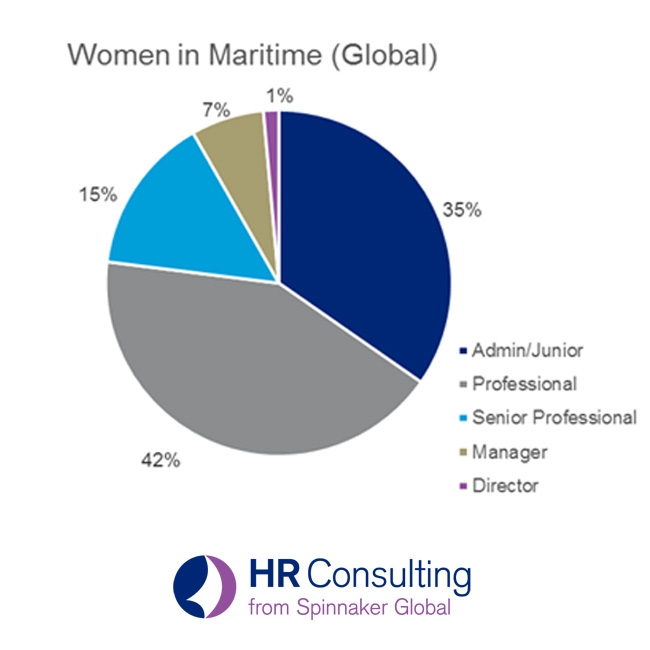Changing Course
Share this blog
Latest Maritime Vacancies
Claims & Insurance Manager (Part-time) – London
Global HR Director – Europe
Operational and Commercial Pricing Analyst- London
Insurance Executive – Singapore
Director – Strategic & Commercial – Europe
Gender diversity in maritime

HR Consulting from Spinnaker Global have recently published a special report on gender diversity across shore based maritime positions, using data captured as part of the Maritime HR Association (MHRA) 2017 salary survey.
Their analysis found 36% of shore-based roles occupied by women. The full report is available to participating MHRA members and includes analysis by job function, level and location. Highlights include:
Job Types
Men dominate roles requiring an engineering focus, such as Newbuilding and Technical, Marine, Safety & Quality. See right; second image.
In contrast, women are most likely to be found in support functions such as Crewing and Corporate Support (HR, Finance, IT, Marketing and Admin Support) – HR and Marketing particularly.
Seniority
The proportion of women employed typically decreases as seniority increases, regardless of job function or location. See right; first image.
Over 76% of the female workforce operate in administrative, junior and professional level roles with very few reaching managerial level or above.
Just 0.17% of the female sample have a place on the Executive Leadership Team.
Location
The largest discrepancy between the number of male and female employees was found in the Middle East, Africa and India – where just 25% of the workforce are female.
Eastern Europe is the only region where more females are employed than men. However, 89% of these work across corporate support and crewing functions.
In country terms, the Philippines has the best representation of women – at 65% of the workforce. However, the vast majority work in administrative and professional level roles – with very little representation at supervisory level and above.
In the USA the decline in the proportion of women employed as seniority increases exists is less dramatic, with nearly 20% of Director level positions filled by women and nearly 14% of Executive Leadership team members are female.
Salaries
In every country recorded, women on average earn less than men.
The global average annual salary for a woman was 45% less than that of men.
This large difference can be partly attributed to the levels at which women work, as well as the location. More women work in the Philippines, for example, where salaries are low – and more men in the Middle East.
If you want to find out more about membership, these statistics or the NEW Career Development for Women in Maritime Programme please get in touch.